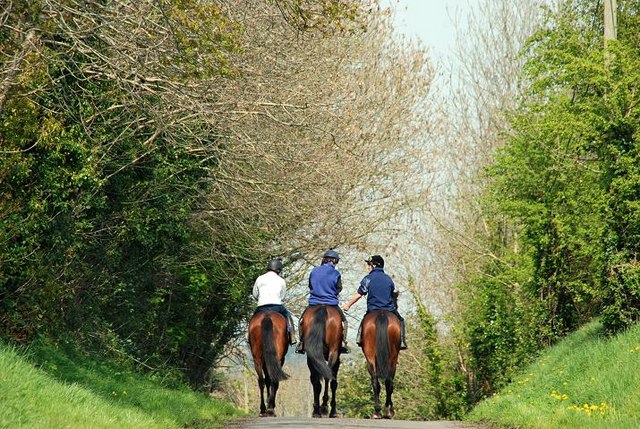
Parents are being accused of raising a generation of cotton wool kids, children who are not allowed to do anything remotely risky such as climbing tree
s, riding their bikes to school or even crossing the road. Parents today seem to be far more risk aware than in previous generations, but are we really doing our children a disservice by protecting them from all of these perceived risks? One of the most dangerous sports in the minds of parents is horse riding, which isn’t quite as dangerous as you may imagine.
Serious Accidents
Most of the very serious accidents when horse riding happen when riding cross country, either for fun or in an eventing competition. This is mainly due to the fact that riding at speed across the countryside is unpredictable; you never quite know what you are going to come across, how high hedges are and whether a rabbit is going to run out and startle your horse. Combine these factors with galloping and traffic, and you’ll quickly understand that this is potentially a dangerous sport. However, when childre
n are learning to ride they are doing so in a very controlled environment, where risks are minimised and the horses are accustomed to dealing with novice riders.
Traffic
The other main risk when riding is that the horse is involved in a collision with other traffic on the road. According to the British Horse Society, there were 8 deaths of riders on the roads in Britain, considerably less than the 107 cyclists and 362 bikers who were killed in the same time period. When you consider that there are 3 million people riding in the UK, these figures seem tiny. Again, riding on the road is not something that children or novice riders will be doing as most of their lessons will be within the safe confines of the riding stables or pony trekking along paths or bridleways well away from the traffic and busy roads. If they are riding on the road, wearing a fluorescent jacket and putting reflective bands on the horse’s ankles can minimise risk.
Safety Equipment
Everyone knows, or should know, that it is essential to wear a properly fitting helmet when riding a horse. Indeed, it is a legal requirement that every ri
der under the age of 14 wears a helmet when riding. Head injuries are the main cause of death and permanent disability when riding, and helmets which conform to the appropriate BS standard and are kite marked will stop damage from being as serious should your child suffer a fall. Once they start jumping, many experts advise wearing rigid chest protectors which will protect against cracked ribs and damage to any internal organs. These sorts of chest protectors are available from most equestrian supplies stores and can be worn under clothing.
Risk Assessment
Parents should not let their own fears about riding and safety stop their children getting in the saddle if they really want to. Parents should use their own common sense when it comes to choosing a stables, and take recommendations from parents whose children ride already to find a reputable place. Visit the equestrian supplies shop before starting your first lesson for a good helmet, and insist that your child wears it. Then do one of the hardest things you have to do as a parent: stand back, cut the apron strings and let your child get on with it on their own. If they fall off, don’t rush over and allow them to find their own feet.
Byline
Article by Morag Peers
